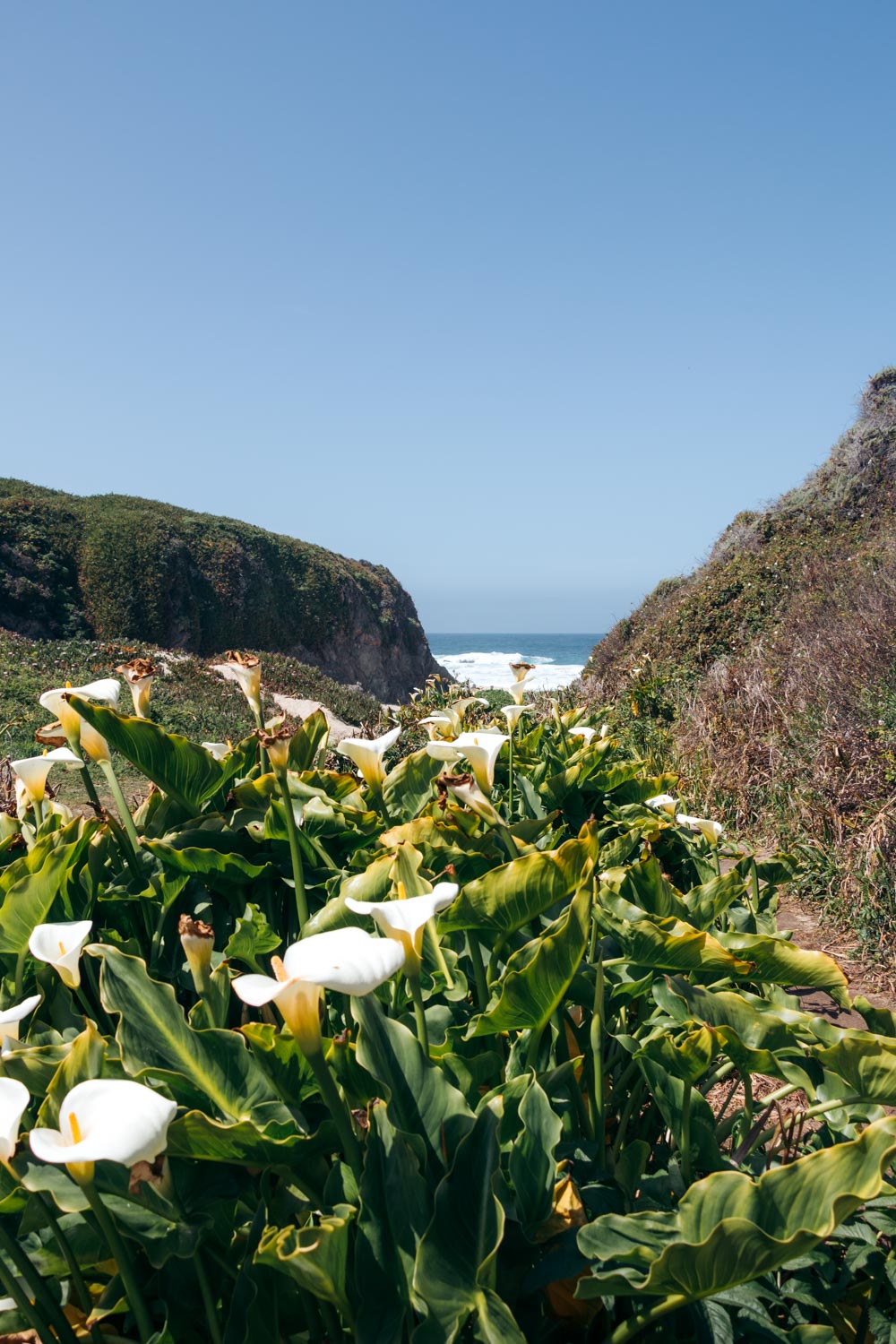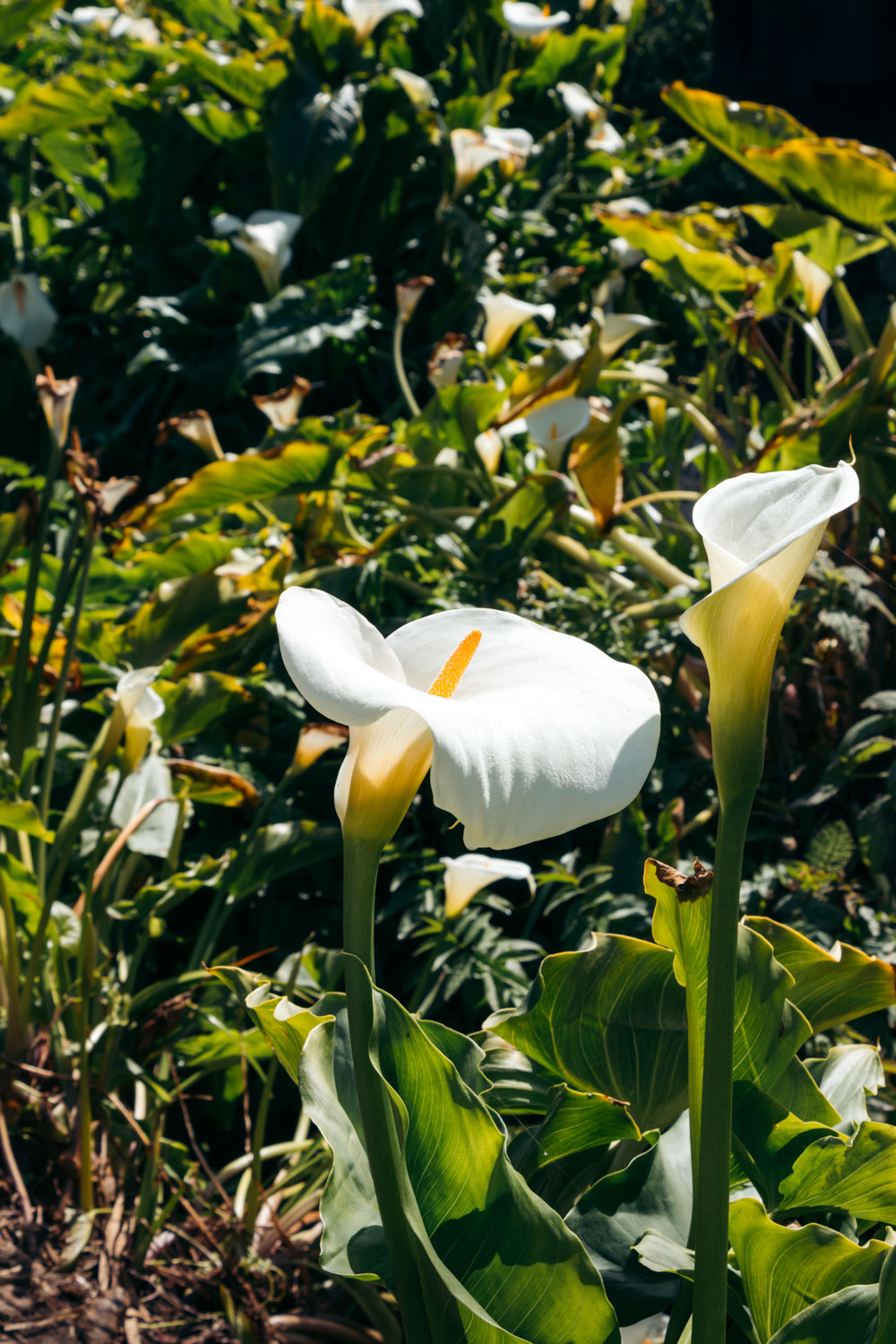I planned our latest road trip across Central and Northern California for mid-March for one good reason. Caressed by the now warmer breeze, large white wildflowers adorned the secluded Calla Lily Valley in Big Sur in early spring.
Last updated: March 18, 2025
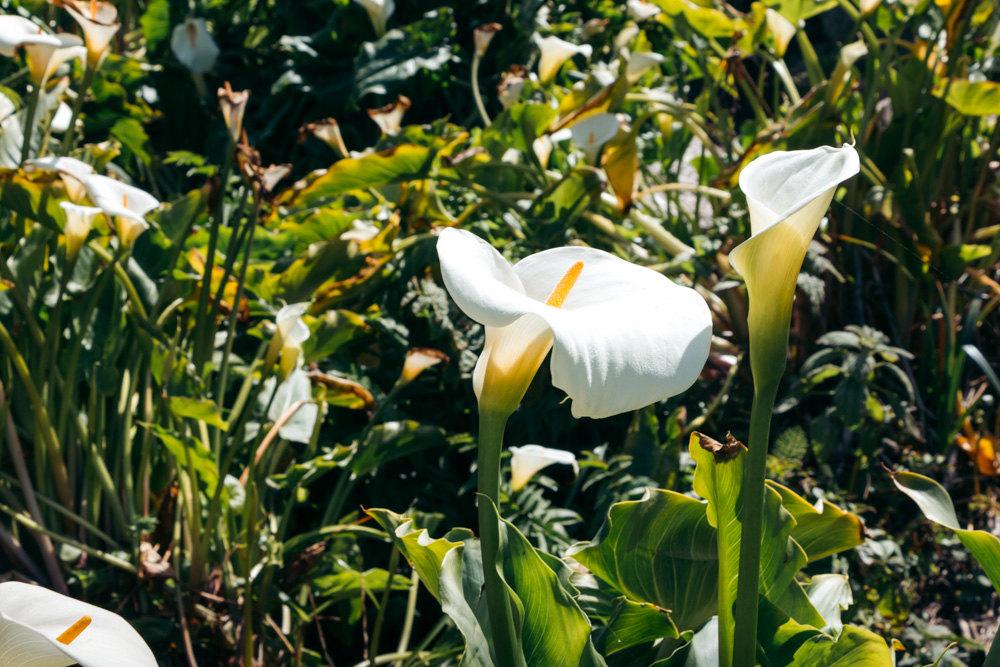
Wildflower in Calla Lily Valley
The wild calla lilies that pop up in the elusive Calla Lily Valley in Big Sur as early as late February were supposed to be in peak bloom by mid-March. Sadly things didn’t turn out as we hoped. Our adventure along the California coast was postponed until late March – early April.
There was little hope left that the short-lived blooms would still festoon the Calla Lily Valley. Yet the temptation to see it for ourselves was greater than any suggestions given by common sense. We decided to go down a narrow path that terminated in a ravine, known as the Calla Lily Valley, no matter what.
Can you imagine our surprise and, yes, joy when we saw the tiny valley filled with large wild calla lilies? The first signs of withering, however, were noticeable.
Blooming Wildflowers in Big Sur, California
The spring brought a vibrant blanket of orange, pink, purple, and violet flowers to Big Sur. This dense duvet has covered expansive hills for miles on end. Not the super bloom California gets every few years, but it was still a charming sight to devour with our eyes.
We spent the whole morning driving and hiking along one of the most beautiful coasts in the world before making our way to Garrapata State Park, home to the hidden Calla Lily Valley. Contrary to what we had expected, the weather wasn’t welcoming, at least not yet. Gusty wind blew over the cliffs, disturbing the mighty ocean and contributing its “melody” to the late morning orchestra that consisted mainly of birds’ songs and occasional squirrels’ squeaks.
Yet despite the uncooperative weather, the wildflowers in the Calla Lily Valley kept their heavy heads up. Making good use of their long stems, the white blooms raised their corollas to the sky to gather all the bits of sunshine they could get.
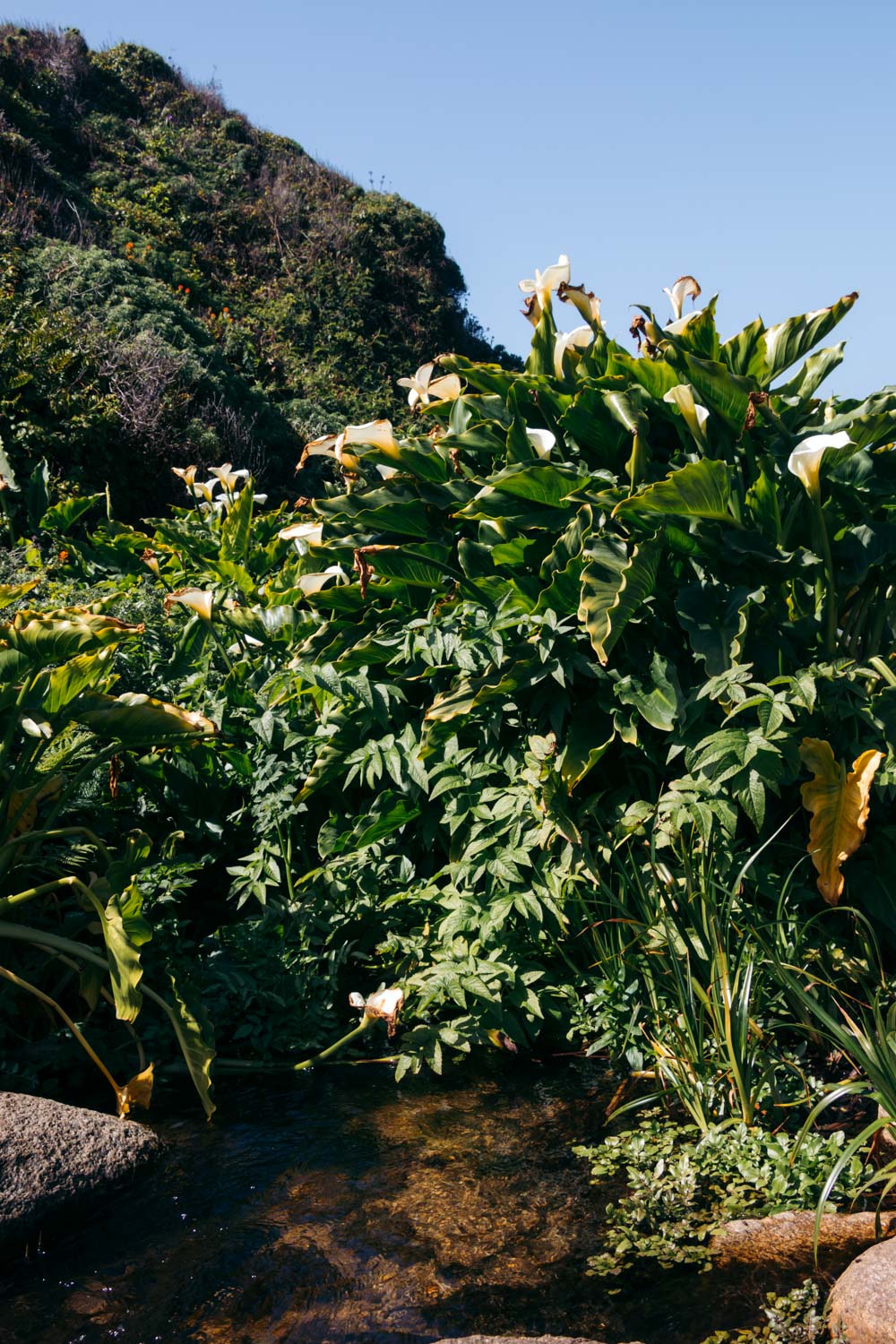
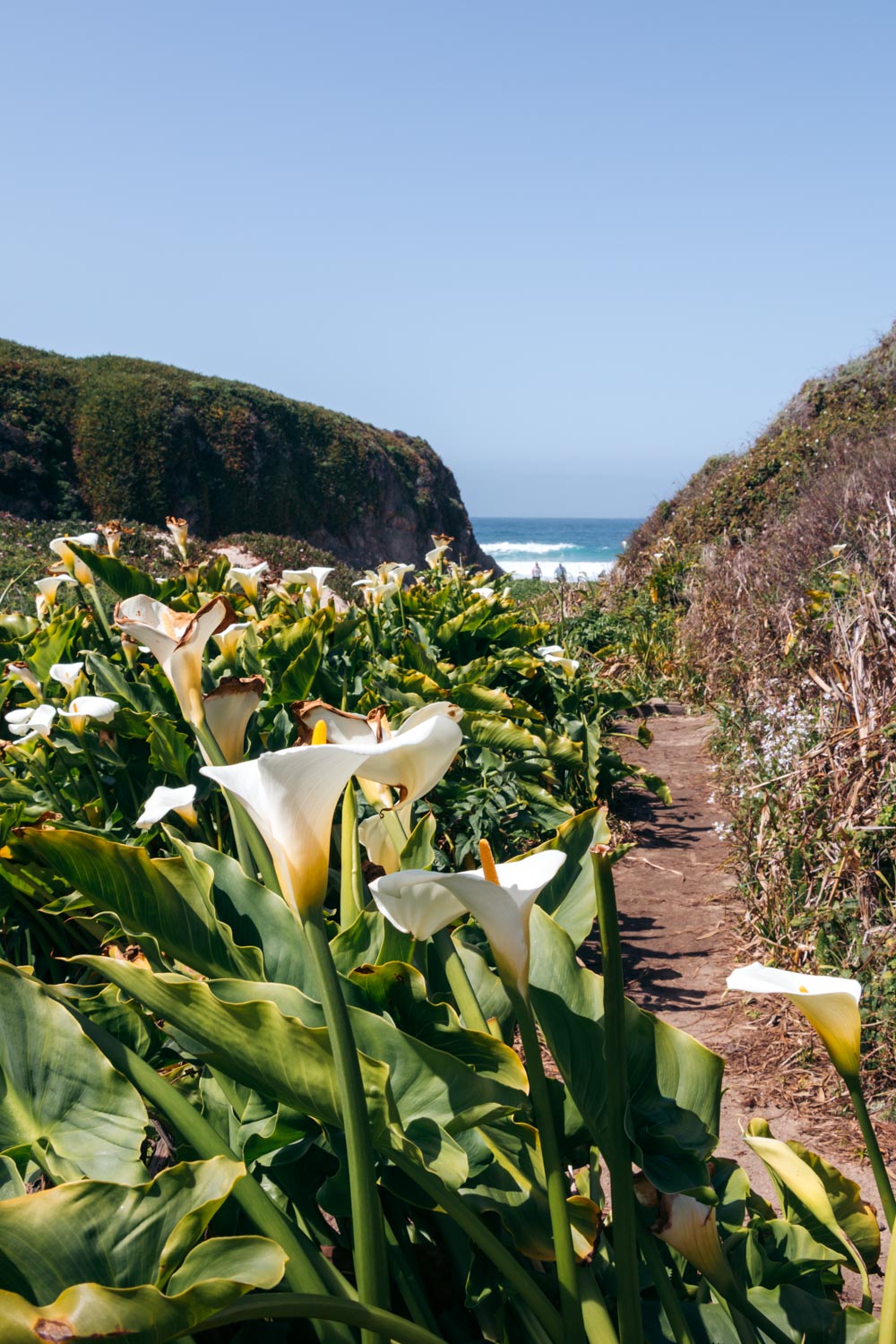
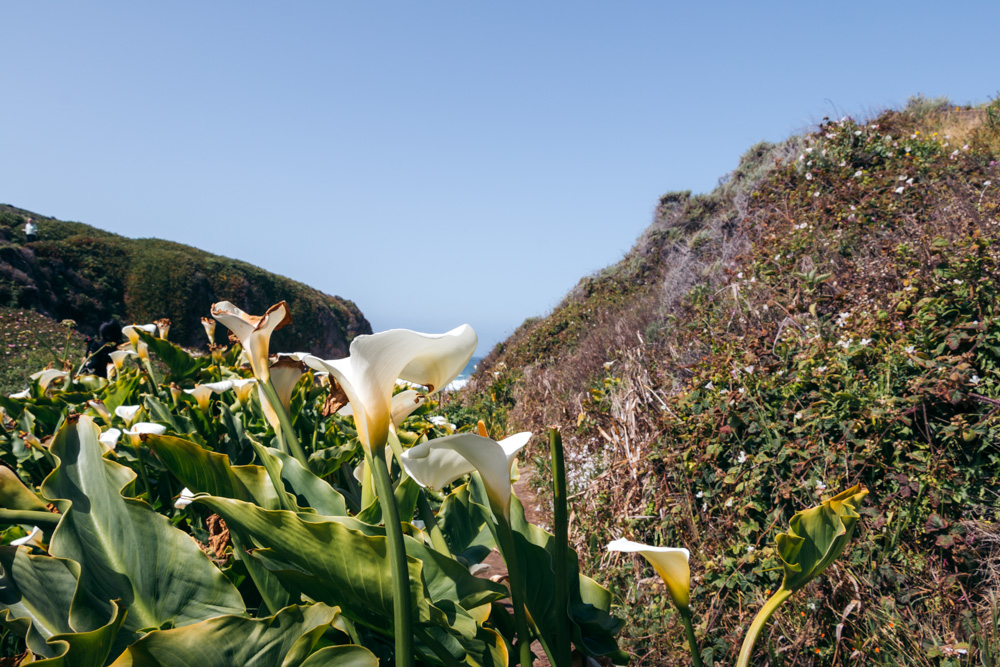
Where to Find Calla Lily Valley
As soon as I was able to convince Roshan to go on a road trip through Yosemite National Park, Pinnacles National Park, and Big Sur, I made up my mind to find the coveted wild calla lilies this time around. The gracious plants with large white flowers spring up in the Calla Lily Valley, a small ravine valley in Garrapata State Park, Big Sur.
How to Get to Calla Lily Valley
- The secreted gully sits along Highway 1, nearly 9 miles south of Carmel-by-the-Sea.
- It takes about 2 hours 10 minutes to drive the unmarked trail that leads to the Calla Lily Valley from San Francisco.
- Many travelers, however, arrive from San Simeon (82 miles south of the Calla Lily Valley) or Pismo Beach (166 miles south of the Calla Lily Valley).
Admission
Unlike some other state parks in the region, Garrapata State Park is free to visit. Not the biggest, yet still enchanting area enhances Big Sur with a few picturesque hikes and the Calla Lily Valley.
Parking and Facilities near Calla Lily Valley
- No official parking lot marks the trailhead to the Calla Lily Valley. Yet plenty of off-road parking spots are guaranteed.
- A restroom is located across the road near the Rocky Ridge Trail.
TIP: During the peak season and on weekends parking can be an issue. So try to start your search for the blooming wildflowers in the Calla Lily Valley early in the morning to ensure quick access to the trail. Otherwise, park wherever you can find an empty spot and walk to the trailhead.
ROAD CLOSURE: As of April 2024, due to road slip out that occurred on March 20, 2024, Highway 1 is closed from the north at Palo Colorado to south of Limekiln State Park. All Big Sur state parks within this area are temporarily closed. As a result, Garrapata State Park and Point Lobos State Natural Reserve are experiencing higher than normal volumes of visitors.
Map
GARRAPATA TRAIL/WILD CALLA LILLIES TRAIL
Trail Info
- Distance: 0.5-mile, round-trip trail
- Trailhead: Near mile marker 63 and gate 19
- Difficulty: Easy
Things to Know before Going on a Hike
It’s a pure exaggeration to call a walk to the Calla Lily Valley a hike. The Garrapata/Wild Lilies Trail is one of the shortest trails in Big Sur. Stretching for 0.25 mile one way, it winds down a bluff, gradually descending to the gully at its bottom.
The trail sits near mile marker 63 and gate 19. But if you enter “Garrapata Trail” into your Google maps (make sure it’s offline), it brings you right to the trailhead.
In fact, there are two trails located just a few feet away from each other. Pick either one of them as they both take you to the Big Sur’s wild calla lilies. Each path arrives at the opposite side of a tiny creek with the flowers around it.
The Garrapata Trail
While the location is secluded and makes you question if you’re on the right path, the Calla Lily Valley is not the biggest secret of Big Sur anymore. Dozens, often hundreds, of hikers walk down the cliff to the small valley with the bubbling creek that flows into the ocean.
The path is anything but hard-packed. Loose sand, as you can find on a beach, charges the trail, trying to sneak into hikers’ shoes. The firm ground of both sides of the path, however, successfully minimizes this inconvenience with a splendid spread of blooming wildflowers.
The coveted valley comes into view at the last switchback turn. Growing densely along the creek that intersects the ravine, the wild calla lilies are a sight to behold. The wildflowers spread between two bluffs. Yet they never claim the sandy beach located just a few feet away.
READ MORE: Visit Flower Fields: Tips, Etiquette, and Photography
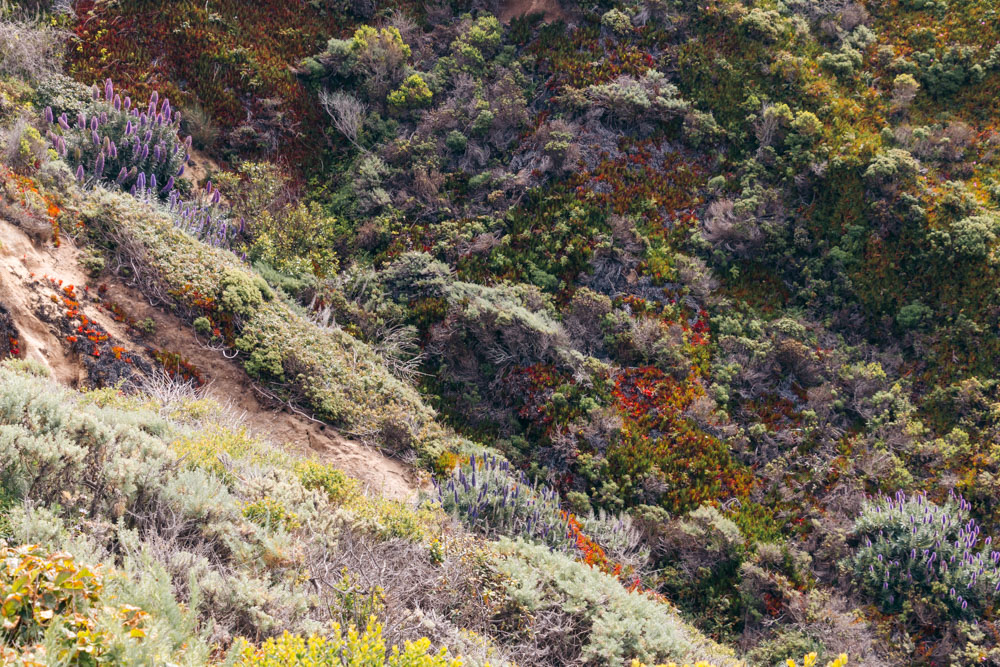
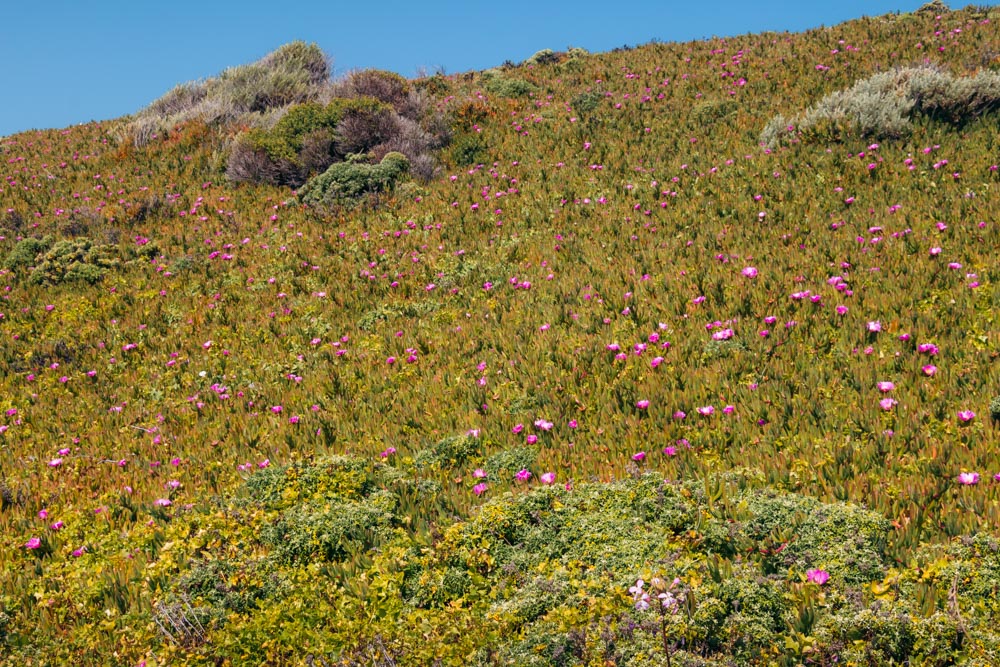
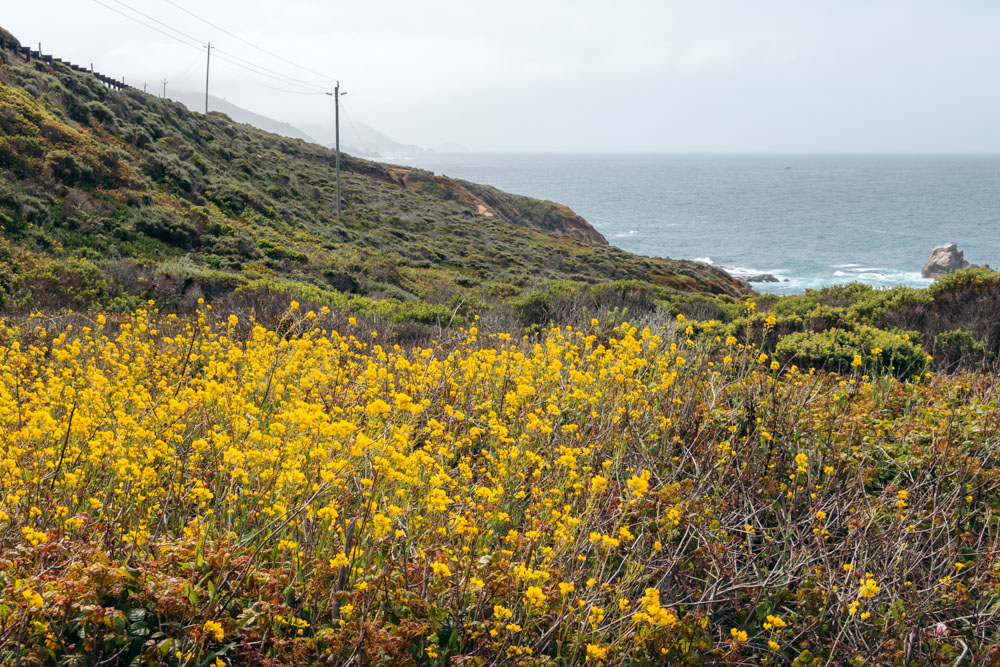
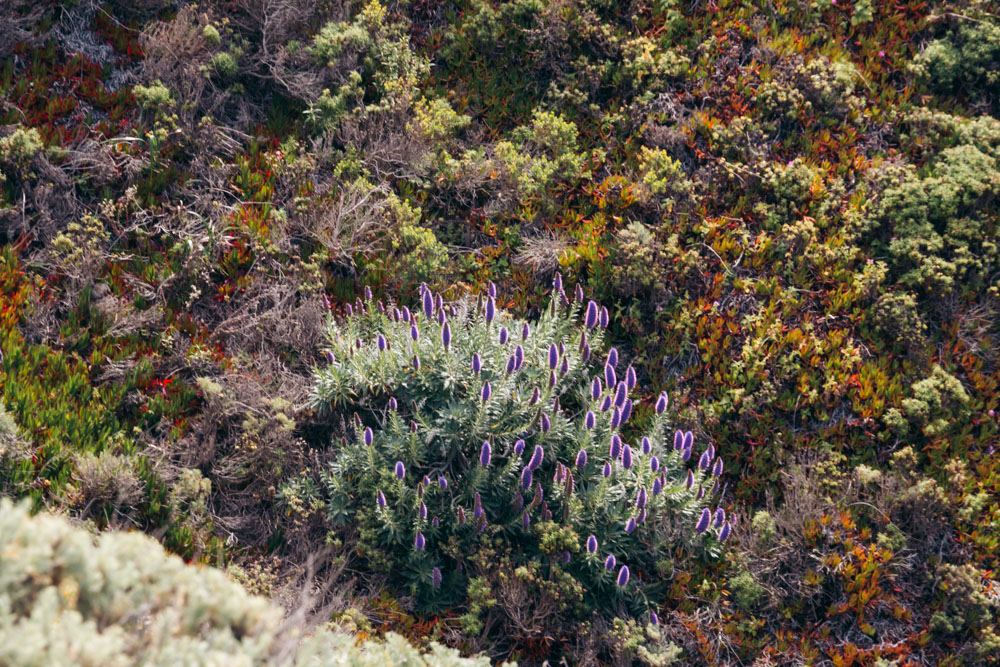
Peculiarities of Wild Calla Lilies
Calla lilies are rather demanding plants that need ample protection to shade their roots and plenty of sunlight to bask their flowers. A lot of moisture and good drainage are also required.
Taking this into account, the secluded mountain hillsides with a tiny creek and a blanket of ankle-high vegetation in the Calla Lily Valley provide perfect conditions for the flowers to grow in the wild.
READ MORE: The 12 Best Places to See Wildflowers near Los Angeles
The Best Time to Visit Calla Lily Valley
The wild calla lilies start blooming in the Big Sur area as early as mid-February. The flowering season can last until mid-April.
At the beginning of April, the edges around the white flowers begin to wither. It’s another week or so before the bloom ceases. After that, only large green leaves and stems remind of the recent bloom.
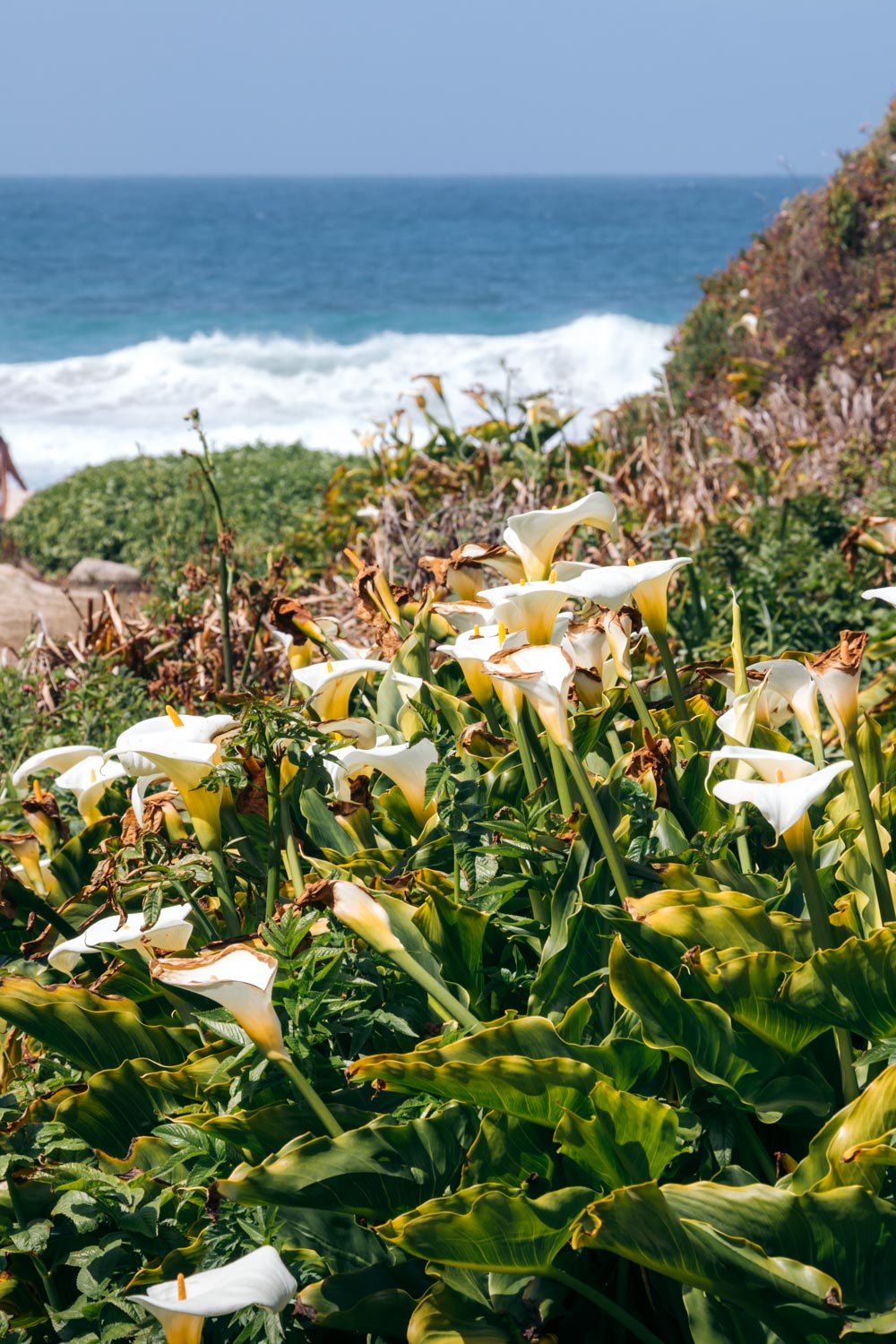
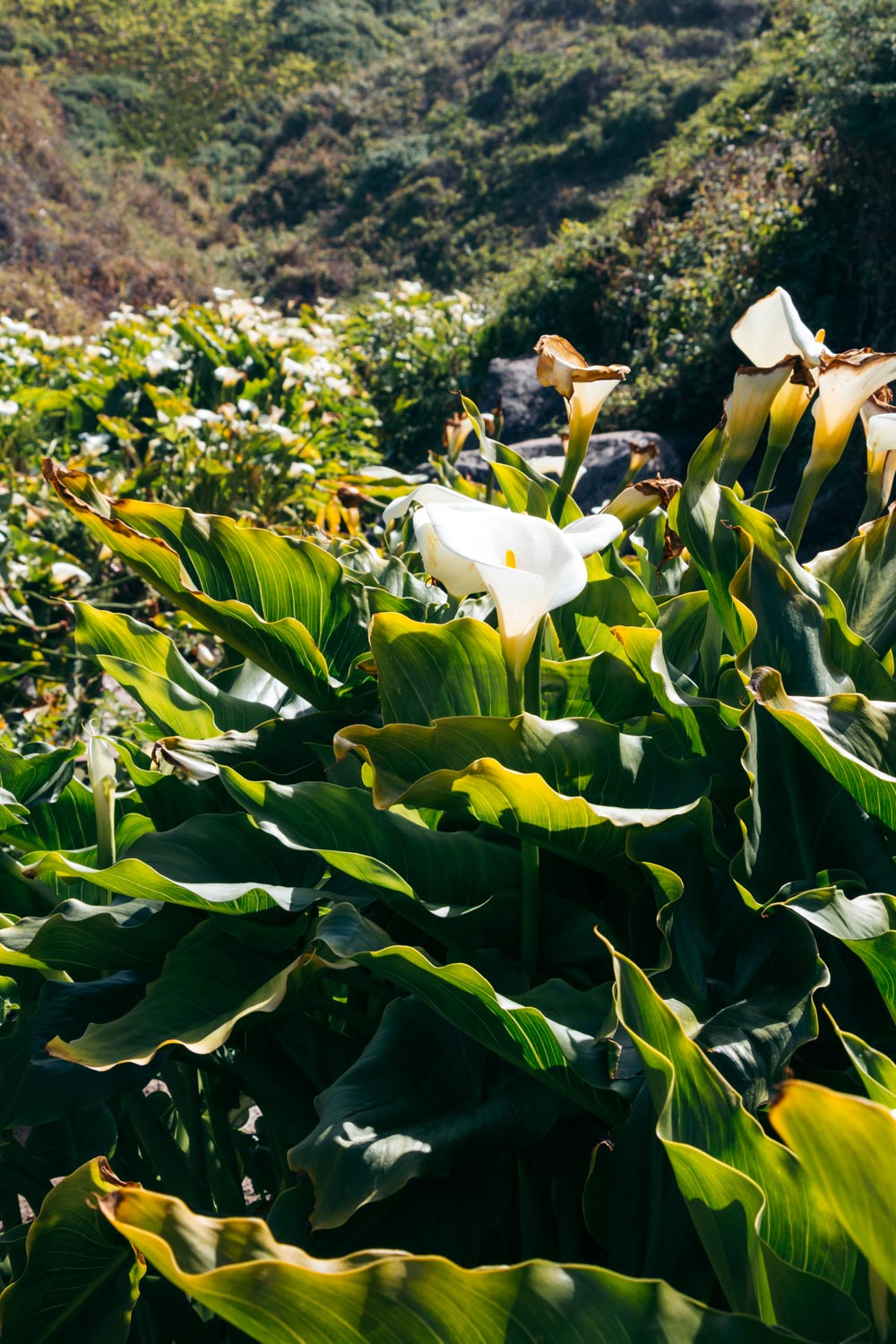
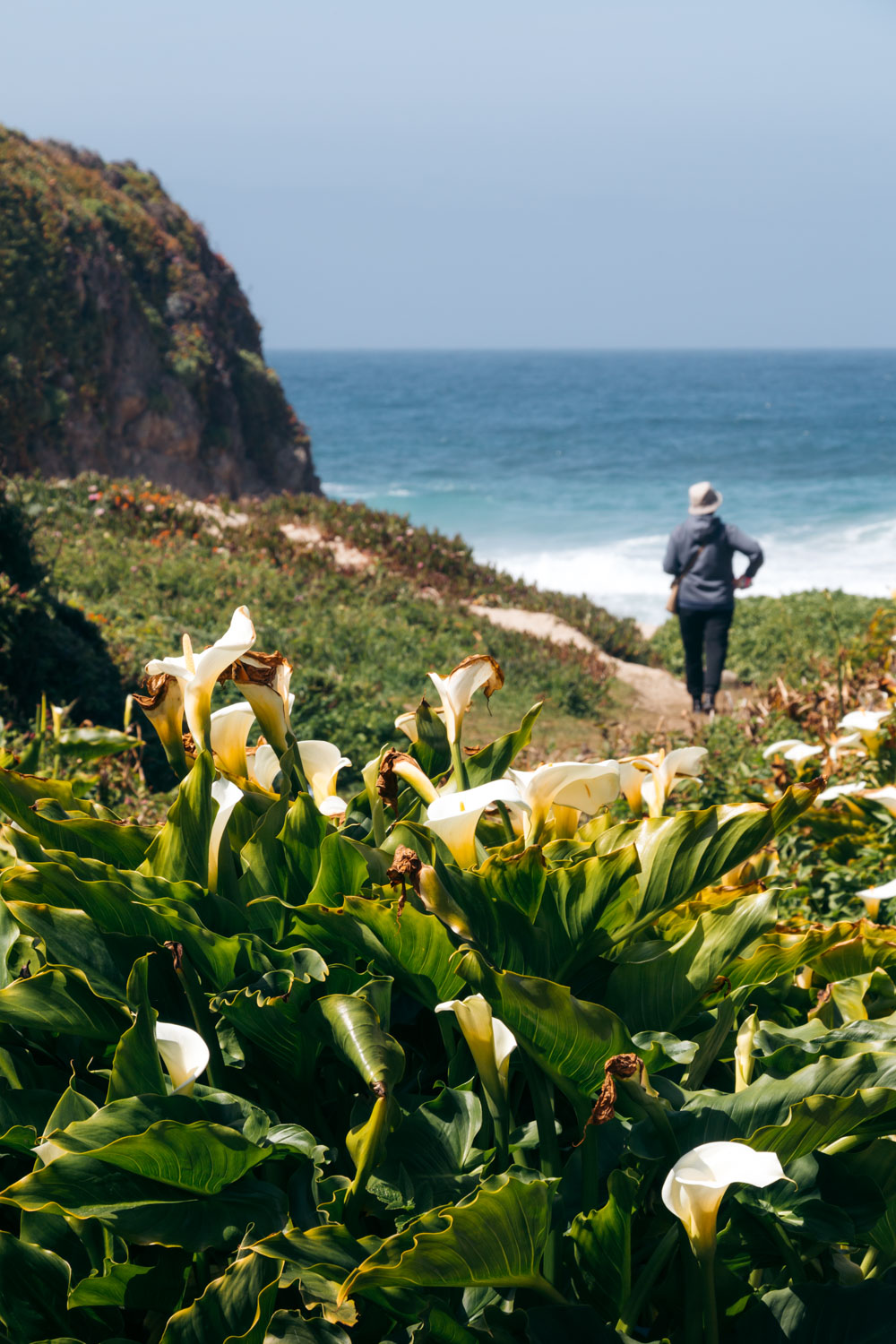
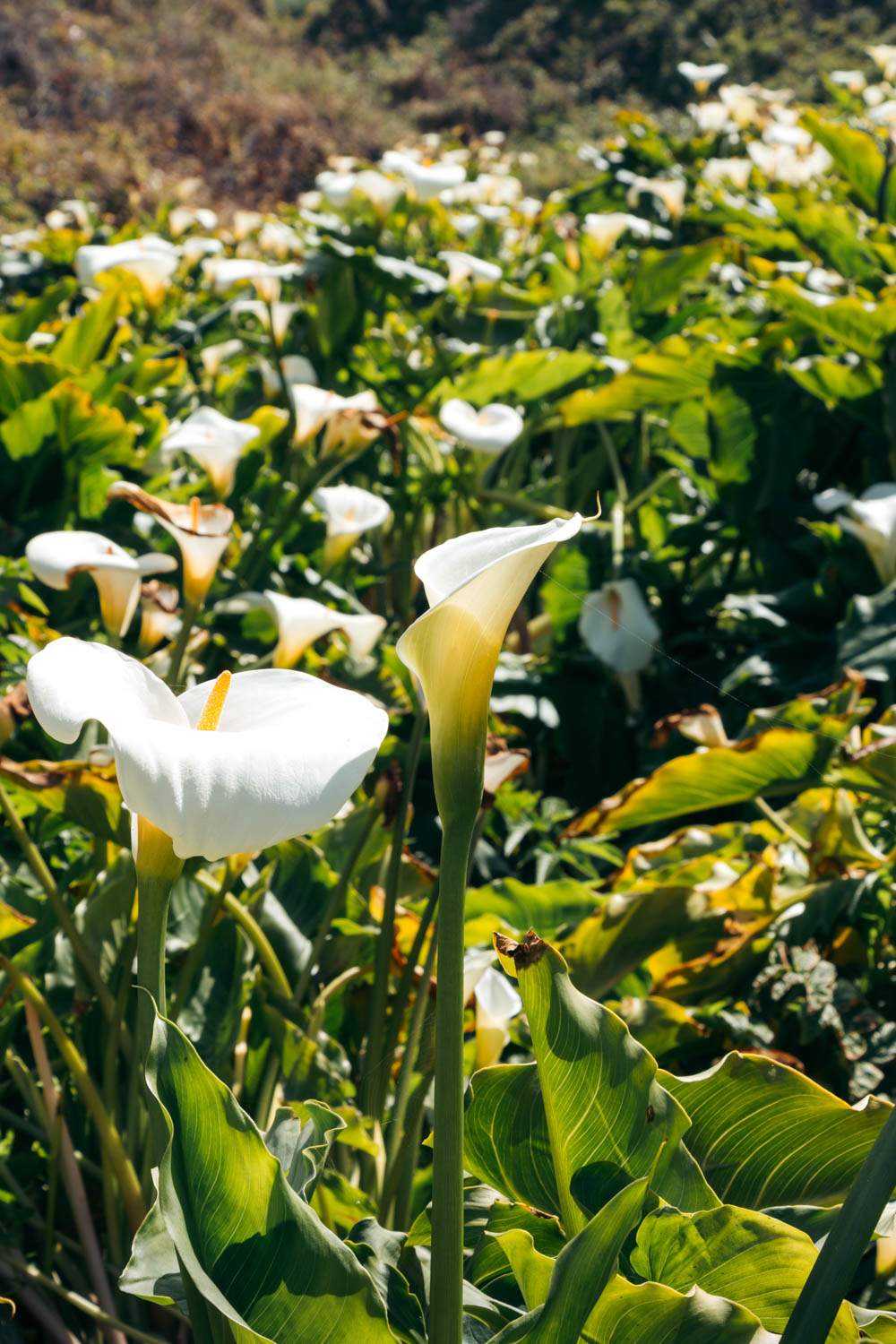
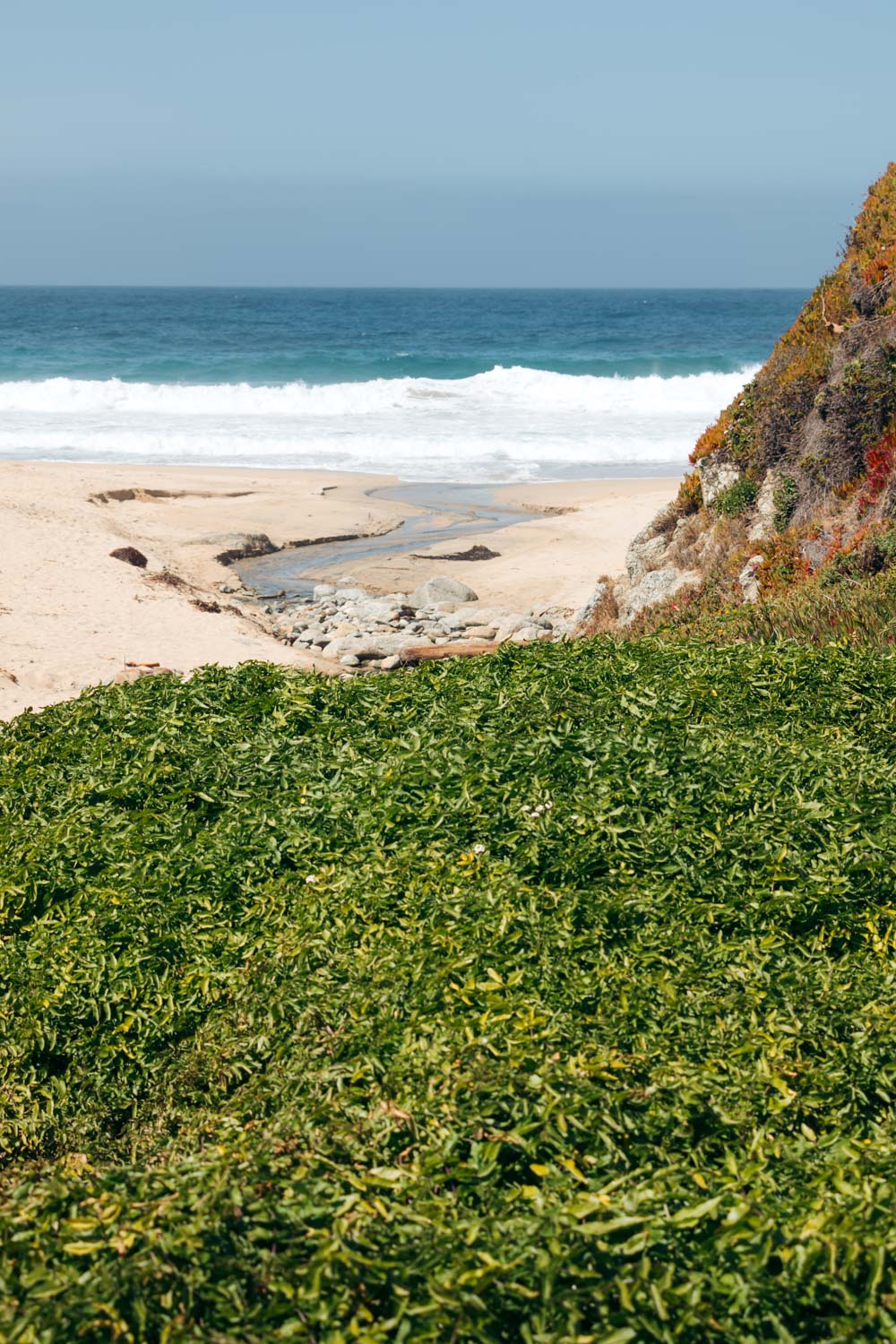
Things to Do Near Calla Lily Valley in Big Sur
1. Soberanes Point and Whale Peak Trail
Located also in Garrapata State Park, the Soberanes Point Trail loops around the peak, offering a profusion of panoramic views and secluded side trails. The hike is 2 miles long. Due to the absence of any signage, the area is normally less crowded than the rest of Big Sur (the Calla Lily Valley, however, slowly loses its secludedness).
2. Bixby Creek Bridge
A short, 10-minute drive takes you to the most popular attraction in the area. Unlike the seasonal wild calla lilies, the nearly 280-foot structure amuses the visitor of Big Sur all year round.
TIP: Don’t linger right near the bridge. Drive a little farther to any overlook with a direct view of the bridge. Blending in with the scenic surroundings, the historic structure looks like a continuation of the natural splendor the area is famous for. Far fewer visitors stopping at the vista point to admire the bridge is another bonus.
3. McWay Falls
You can admire the second most popular landmark in the Big Sur region from a distance. Getting closer to a beach with a splashing waterfall is not allowed. The area is highly hazardous.
The end of the Waterfall Overlook Trail is the best way to feast your eyes on the astounding site. Similar to the Garrapata/Wild Calla Lilies Trail, the path is short, spanning only 0.25 mile.
4. San Simeon
San Simeon is the closest village where you can call it a day after exploring the spectacular natural wonders of Big Sur. Known as a gateway to the scenic drive, this coastal town entertains visitors with Hearst Castle, one of the most extravagant historic structures in the American West, and northern elephant seal rookery.
